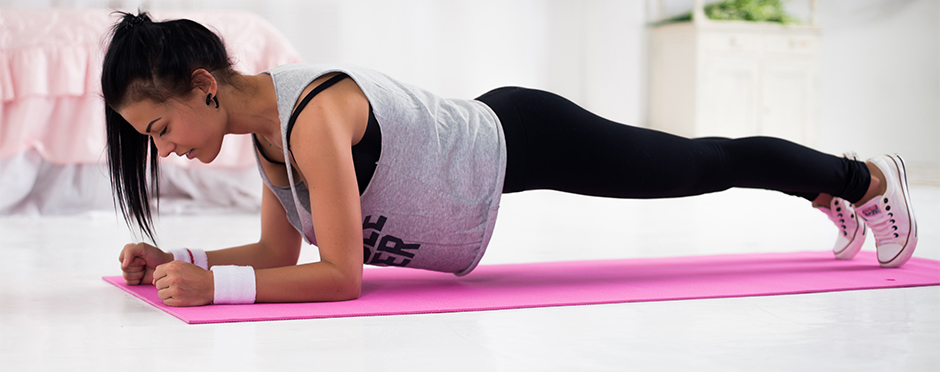
5 Exercises to Improve Core Strength for Cheer Stunting
Leave a CommentThe core is the foundation for your entire body. Your core is much more than just abdominal muscles; the core includes the whole trunk, including the front, back, sides, and pelvic floor, and it spans from your shoulder blades to your hips. Every movement for a cheerleader starts at the core. If cheerleaders are not activating the core, then all movements, including running, squatting, basket tosses, and stunting, could be weaker, slower, or lead to injury.
Core strength is essential for all cheerleaders in a stunting group. Both the bases and the flyers need a strong core for the safety of the stunt and proper execution.
Bases
Bases in cheerleading lift or throw a flyer into the air during a stunt. Depending on the cheer team, bases can be either male or female. Bases need strength to lift and hold a person above their head and the power to toss a person into the air. Bases need to be strong throughout their bodies to achieve these skills. Since a base helps lift another person, they need to ensure they are lifting correctly, using core activation and leg strength to protect their back from injury.
Flyers
A flyer in cheerleading is the athlete on top of a stunt or being lifted into the air by the bases. The flyer is most often a female athlete, who is generally short and lightweight. Flyers need to be very flexible to perform intricate stunts while being held above the bases. Flyers also need to be strong. A strong core is key for flyers to help them maintain their balance when performing libs, scorpions, basket tosses, and other skills. A strong core for a flyer can help prevent injury by improving their balance and helping them have clean stunts and catches.
5 Exercises to Help Improve Core Strength
Here are some core exercises to help improve cheerleaders’ core strength.
1. Planks
- Planks are an excellent whole-body exercise if done correctly!
- Begin with your arms right under your shoulders, arms can be straight, or you can be on your elbows.
- Push up onto your toes and keep your body in a straight line.
- Engage your abdominals, glutes, quads, and make sure to keep your shoulders pulled down away from your ears.
You can modify for difficulty level by placing your knees on the ground until you are ready to progress to on the toes.
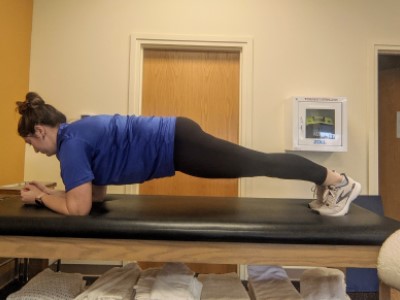
Planks can also be performed on each side.
- Again, ensure the arm is right under the shoulder and engage the abdominals and glutes to make a straight line.
- You can also bend the knees to modify the side plank.
- Begin by holding for 15 seconds and progressively increasing until you can hold for 1 minute with good form.
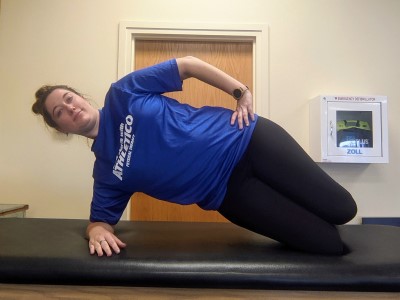
2. Bird Dog
- Begin on your hands and knees. Make sure your back is not arched or rounded, and keep the muscles by your belly button engaged in making your back flat, like a tabletop.
- Slowly lift your opposite arm and leg and extend them away from your body, maintain your back in a flat tabletop type position, and do not rotate your body.
- Return to starting position.
- Perform on alternate side. You can use ½ a foam roll laid across your back to ensure you are not rotating too much.
- Perform slowly. Think that your arm and leg are reaching out from your body rather than going up toward the ceiling to prevent arching in low back.
- Perform 10 repetitions on each side. Repeat 2-3 sets.
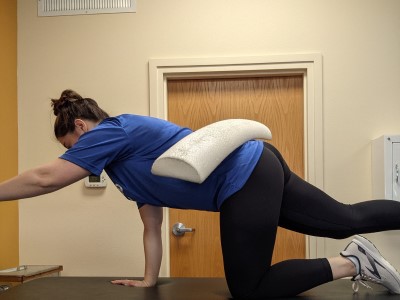
3. Alternating Toe Touch
- Begin lying on your back, focus on keeping the muscles by your belly button tight, reach with your right hand toward your left toe while bringing both the arm and leg up toward the middle.
- Return to start.
- Repeat with the opposite arm and leg.
- Perform ten repetitions on each side. Repeat 2-3 sets.
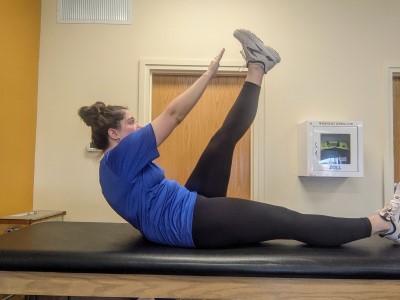
4. 90/90 Toe Tap
- Begin lying on your back with knees bent and feet off the ground in a tabletop position.
- While keeping the muscles by your belly button engaged and your back flat on the floor, lower one foot to touch the floor, then return to the start position.
- Repeat on the other leg.
- Continue alternating legs while maintaining core activation for ten reps on each side.
Perform 2-3 sets.
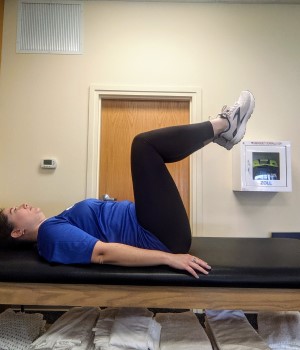
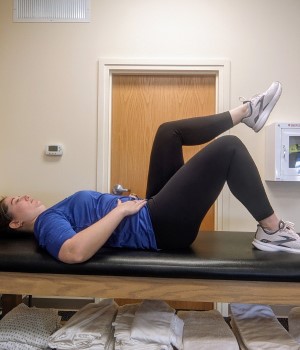
5. Squats with Medicine Ball
Squats are generally thought to be a lower-body exercise, but we can increase the challenge to the core by adding a medicine ball or weight. For cheer bases, having proper squat form is vitally important.
A good squat includes weight thru the heels.
- Imagine sitting back in a chair, keeping your chest upright, and making sure the core and glutes are engaged.
- Upon rising from the squat, perform an overhead press with the medicine ball to simulate lifting a flyer.
- Your low back should remain in a neutral position when you press up, do not round or arch your lower back.
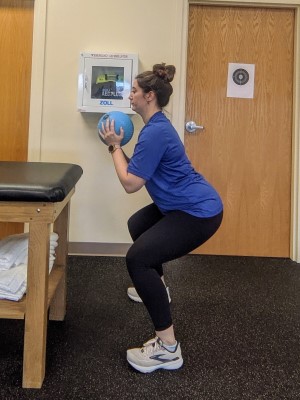
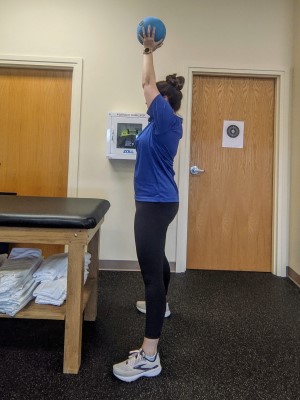
Quality Over Quantity!
Quality repetitions are more important rather than the total number. Make sure you are using your core muscles. Avoid straining your neck muscles or compensating with other areas of the body when doing these exercises. A good core exercise is performed slowly and with control. If you cannot perform the exercise correctly with proper form, you should stop and modify the exercise to ensure proper core activation. For help with proper form, reach out to a Physical Therapist at an Athletico near you today. Free Assessments are available in-clinic or virtually through our Telehealth platform.
The Athletico blog is an educational resource written by Athletico employees. Athletico bloggers are licensed professionals who abide by the code of ethics outlined by their respective professional associations. The content published in blog posts represents the opinion of the individual author based on their expertise and experience. The content provided in this blog is for informational purposes only, does not constitute medical advice and should not be relied on for making personal health decisions.
